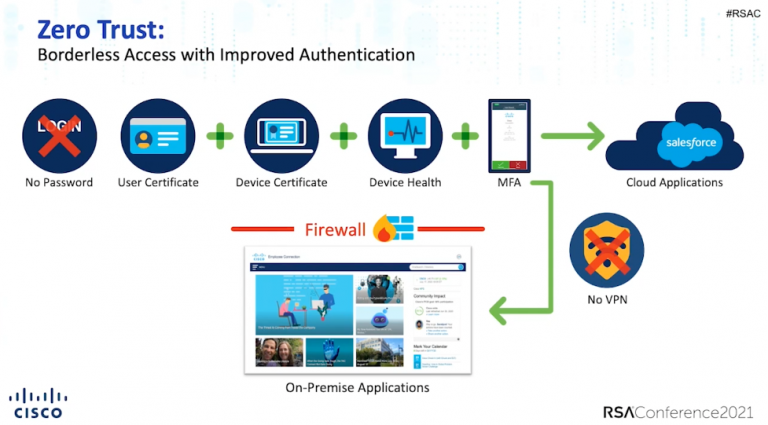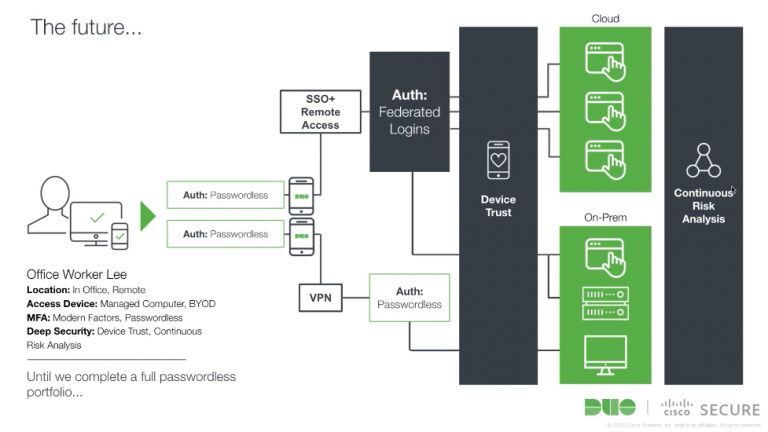
Dealing with stress, burnout and mental health
May 21, 2021
Autodesk AEC Excellence Awards Celebrates a Decade of Design and Construction Innovation
May 22, 2021Recapping RSAC 2021: Cisco’s Keynote, Zero Trust Deployment & Passwordless Authentication

It was a packed virtual RSA Conference this year. Although I missed being in San Francisco’s Moscone center, visiting booths and chatting with industry peers, the virtual experience did have one key benefit in my opinion – the on-demand replays of the sessions. I was able to watch all the sessions that I wanted to without having to rush across the floors of the Moscone center.
Resilience was the key theme this year at RSAC and rightly so. Organizations had to adapt to enabling a remote workforce in an accelerated time frame.
“Two thirds of the CIOs in all the organizations have said that post-pandemic they will spend more on security investments, and projects that used to take years now take weeks or months”. – Chuck Robbins, Chairman and Chief Executive Officer, Cisco, RSAC 2021 keynote presentation
In the presentation, Chuck Robbins emphasized that end-to-end security is key, and how a foundational approach to security can truly lead us to power an inclusive future for all. In case you missed it, you can watch it here.
Zero Trust Moves Beyond The Marketing Hype With Practical Approaches
One key security trend that has enabled this rapid digital transformation for organizations is a zero trust architecture. Almost all vendors showcased a product or solution that aligns with this architecture. But a few key vendors showed how it can be implemented at scale. Cisco’s Chief Security and Trust Officer, Brad Arkin, showcased how Cisco deployed Zero Trust Access to support a global remote workforce in just five months, significantly improving user experience without compromising on security.

In case you were not able to watch Brad Arkin’s session, here is a detailed blog that not only outlines how Cisco deployed zero trust but also offers a blueprint for success to implement zero trust in your organization.
The Convergence Of Identity And Security
Securing user identities was another popular topic this year that many vendors covered. Zero Trust architecture falls apart without strong authentication to verify user identities. And security projects are increasingly identity-driven. Many vendors now offer Multi-Factor Authentication (MFA), Single Sign-on (SSO) and conditional access as part of their product portfolio. The race is on for vendors seeking to consolidate customer’s IT & security infrastructure.
At the same time, the ubiquity of smartphones and biometric capable devices and the emergence of WebAuthn, a FIDO2 standard for modern strong authentication, promises to put an end to the crisis of compromised credentials. Passwordless authentication also offers other benefits such as an improved user experience and lower IT costs related to password management.
At Cisco Live, Duo announced its passwordless authentication solution. This solution is part of Cisco Duo’s wider secure access offerings with industry leading MFA, SSO and adaptive access controls.

Read the blog to understand how Passwordless authentication enhances but doesn’t replace access security strategy.
In Conclusion
These were some of my observations this year at RSAC 2021. What were your observations? Did any security trend peak your interest or surprise you? Comment below and let us know.
If you are a security professional working on or planning a Zero Trust, IAM or Passwordless authentication projects, feel free to reach out to us to have a conversation. Or if you are shy and want to start on your own, you can test Duo by signing up for a 30-day Free Trial.
We’d love to hear what you think. Ask a Question, Comment Below, and Stay Connected with Cisco Secure on social!
Cisco Secure Social Channels
Instagram
Facebook
Twitter
LinkedIn

